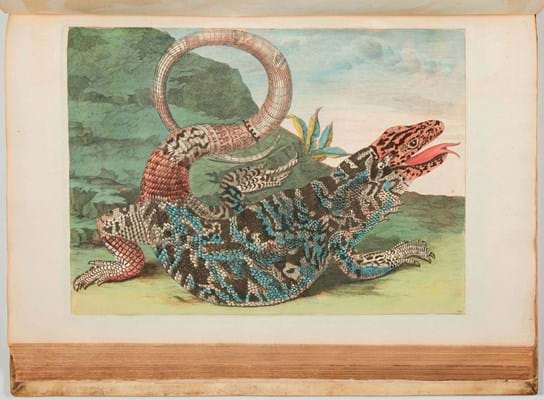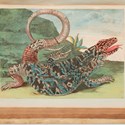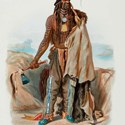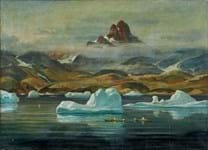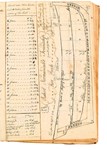Sold at $48,000 (£37,500), it was one of a couple of rather unusual ‘firsts’ featured in the sale.
Its author, Thomas Morton – called the “Lord of Misrule” by William Bradford, governor of the Plymouth colony – had overthrown his business partner, the slaver Richard Wollaston, and transformed their trading post into an egalitarian and liberal society called Ma-Re Mount, or Merrymount.
Massachusetts Puritans were scandalised by Morton’s “Comuscrew of disaffected fur traders, antinomians, loose women, Indians and bon-vivants”, who traded guns to the Algonquins – and, even worse, engaged in “dancing and frisking together” with them.
Tensions came to a head in 1628 at a May Day festival, when the local militia, led by Myles Standish (or “Captain Shrimp” as Morton called him) chopped down the Maypole and arrested Morton.
Tried for supplying arms to the Indians and left to die on an island off the coast of New Hampshire, Morton survived to make it back to England and bring a lawsuit against the Massachusetts Bay Company.
New English Canaan… was written with help from literary friends at London’s Mermaid Tavern, among them Ben Jonson, and, to quote the inspired cataloguer, is an “unremitting satirical attack on the Puritans as well as a joyous Jacobite romp, telling a lost true story of America’s colonial history”.
It earned itself the title of the first book to be banned in America.
Morton, who denounced the Puritan policies of land enclosure and genocide of the native population, also called for the “demartialising” of the colonies and the creation of a multicultural New Canaan in the New World.
This work was once in the collections of George Brinley, an eminent 19th century collector of Americana, as was a copy of another Puritan-bashing work sold in the same auction.
Quaker Samuel Groom’s A Glass for the People of New England, in which They may See Themselves was printed in London in 1676.
Prompted by the prosecution – at the direction of Massachusetts’ ruling classes – of those deemed subversive to church and state, this rare work was described as an “…excoriating tract against the intolerance and injustice of the New England Puritans”.
It made $110,000 (£85,940) at the sale on October 25
Company man
Sold at $22,000 (£17,190) was a manuscript document of 1643, endorsed by Peter Stuyvesant, in which William Kleft, one of those appointed by the Dutch East India Company to be a Director of New Netherland, grants land near Coney Island to Moroccan-born Anthony Jansen van Salee.
The recipient of this grant is boldly defined in the catalogue as the first person of Muslim origin to settle in America.
Louisiana letter
One of the first lots offered in the ‘Louisiana Purchase’ collection of Alonzo J Tullock was a letter of August 1809 in the hand of William H Harrison, a future president of the USA but at that time Governor of the Indiana Territory.
Addressed to a French-born Spanish colonial official, Charles (‘Don Carlos’) DeHault Delassus, Lieutenant Governor of Upper Louisiana, it contained Harrison’s news that he had “…received important intelligence. It is no other than the entire cession of New Orleans and the whole of Louisiana to the United States.”
This letter made $100,000 (£78,125), while another sent by Harrison around three months later, informing his friend that a treaty with France had been ratified by the president and senate of the US, reached $75,000 (£58,595).
Further highlights
The most expensive book in the sale, at $180,000 (£140,625), contained two splendidly and profusely illustrated works by the naturalist and artist Maria Sibylla Merian (1647-1717).
These were a 1719 second, enlarged edition of the Dissertatio de…insectorum Surinamensium and a 1730, first folio edition of De Europische Insecten.
The volume was last seen at auction in 1987, when as part of the great botanical library of Robert de Belder it sold at Sotheby’s for £110,000.
Sold at a high-estimate $80,000 (£62,500) was a 1776, two-volume first of Adam Smith’s …Wealth of Nations. In a worn, dry and broken full calf binding, it was thought to have once been part of the library of a Scottish peer, the 10th Lord Blantyre.
Beautiful mind
The most expensive lot by far in the New York sale, at $600,000 (£468,750), was the Nobel Prize medal in Economic Sciences belatedly awarded in 1994 to John Nash Jr for his contributions to ‘Game Theory’.
Nash’s brilliant insights into human behaviour reached a far, far wider audience when his much earlier achievements and troubled life were told in the award-winning film A Beautiful Mind.


